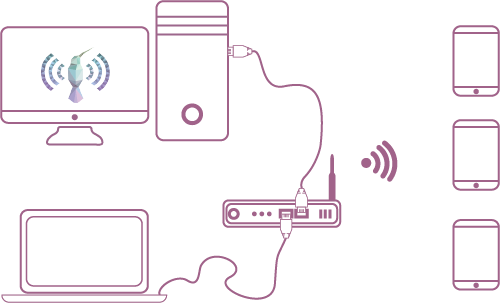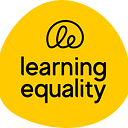Writing and Learning to Fly with Kolibri
My 2019 Google Season of Docs Writer Experience
By way of the first-ever Google Season of Docs (GSoD) program, Learning Equality matched with Danielle Vansia, a technical writer. This program sought to connect open-source organizations like Learning Equality with technical writers to support the organizations’ documentation needs. Danielle holds a passion for creating digestible materials to help people learn a new application and gain self-sufficiency in using it. Over the course of 5 months, Danielle collaborated with our team to write documentation related to Kolibri installations, setups, and content workflows. Below, we hear reflections from Danielle as her time with Learning Equality winds down.
May 2020 Update: Learning Equality is delighted to announce we’ve been selected for Google Season of Docs 2020. Visit the project ideas page for the GSoD 2020 edition here to see what we have in store for this year!
The Google Season of Docs (GSoD) program was an unexpected opportunity that came to me at the perfect time in my career. During the day, I work in health care IT as a technical writer, creating release notes and reference documentation. I was anxious to find another experience that would allow me to gain a stronger understanding of the field. I also wanted to be able to give back to the open-source community and make an impact by writing. GSoD was my opportunity to work with an open-source organization and actually make a difference with documentation.
Application Process
GSoD applicants are invited to view available projects by participating organizations. Applicants then submit their own responses to these proposals for one or more organizations. After viewing Learning Equality’s mission, product, and work, I was positive that I would only apply for this organization. Applicants communicated, as a group, through Slack to find out more information about Learning Equality and documentation. During the application process, I had the pleasure of working with Radina Matic and Ivan Savov on fine-tuning my proposal. They both provided so much useful feedback. Even if I had not been accepted to the program, this review process alone made the time spent worthwhile. This was one of the qualities of Learning Equality that I fell in love with: dedication. Each person that I have met through this project has shown me the utmost dedication to the organization’s mission, as well as their own work. When I received my acceptance email in early August, I was ecstatic.
Community Bonding
The GSoD program designates the first month for community bonding. My initial project proposal focused on creating user-based training for content workflows. During this bonding period, I discussed with Radina the ways that I could refine my proposal to fit with changing organizational needs. With additional input from the rest of the team, we decided to keep role-based user experience a common theme throughout all of the deliverables that I would work on. We also enhanced my proposal to include some other projects.
As a result of this focus, my project covered all aspects of the Kolibri ecosystem. This includes creating documentation to aid users in understanding general technical literacy concepts, making decisions about their facility’s Kolibri implementation, scoping and integrating content with Kolibri Studio, and installing and using the Kolibri Learning Platform.
Documentation Development
The team welcomed me with open arms. I attended one of their All Hands Meetings during one of my first weeks. Given that the team is primarily located in San Diego, and I am based on the East Coast, it was much easier for me to maintain my day job and hold this position at the same time (in addition to the team being accommodating to my schedule!). Each of the projects that I worked on were totally unique and greatly evolved from my original proposal.
Networking Video
My first project focused on explaining the Internet and networks to individuals who have little to no knowledge on the topic. I ended up learning a lot more about general networking, beyond what I covered in the video.
Kolibri is used all over the world by individuals with varying levels of technical literacy. One of the biggest points of reference that a technical writer needs to keep in mind is their end user audience. Comparison and metaphors are typically great approaches for explaining difficult concepts.
With this in mind, I used the metaphor of sending a letter, something that is familiar to a large audience from diverse backgrounds, to explain this topic.
I began developing a visual script. Radina and I spent countless hours trying to come up with the best way to refine my initial drafts. From there, I challenged myself by creating all of my own graphics and animations.
One of the most rewarding parts of this project was challenging myself to produce professional work with limited resources. I do not have personal access to high-level production or animation software, but I was able to use desktop publishing and office applications to produce this video. I was also lucky enough to find low-cost or free substitutes for more popular audio and screencasting software. I presented the video to the team and received a lot of valuable feedback that I was able to incorporate into a final copy.
Installation Videos
My second project was to create a suite of installation videos to demonstrate how to install Kolibri on different operating systems. This was my first time working with virtual environments, and I was able to learn a lot from this experience. I practiced my video skills again as well as created timed captions so that the videos could be translated into other languages.
Hardware Guide
The Hardware Guide project was the first documentation project that allowed me to leverage feedback from Kolibri’s community of users, as well as the Kolibri Hardware Grants Program grantees to enhance an existing guide that is part of the Kolibri Toolkit. This guide is critical because it helps organizations understand how to set up Kolibri depending on the hardware available and the pedagogical model. I worked with Elizabeth Vu and other members of the Implementation Team including Riddhi Avlani and Laura Danforth to develop a new version of the guide. Some of the main enhancements include:
- Added information about additional resources so that users can make more informed choices about their facility setup.
- Checked page formats and styles so that everything is consistent throughout the guide.
- Updated graphics and images throughout the guide.

This project allowed me to interact with a number of members on the Learning Equality team. I thought that my time difference and working remotely would make this difficult; however, that was never a problem because the team works across many different time zones already. Sometimes technical writing can be a very independent activity. This made the experience much more rewarding. I was able to better understand implementation concepts and considerations for setting up a learning environment.
Content Integration Guide
The Content Integration Guide was the first time I was able to work on something completely derived from inputs from the team. This task involved creating a brand new document based on these inputs. Shivi Chandra provided me with contextual guidance and the requirements for this documentation. I then created a formal information plan that was later used to inform the structure and format of the guide.

I worked directly with members from both the technical and implementation sides to develop information on best practices for integrating content with Kolibri. Kevin Ollivier, Ivan Savov, and Lauren Lichtman all provided perspectives from different standpoints that allowed me to refine the content to better suit end user needs. By this time, I had a deep understanding of Kolibri, and this project was a great way to tie together everything that I learned over the past five months.
Winding Down and Lessons Learned
As I come to the close of this project, I am looking back and reflecting on what I learned while working with Learning Equality during GSoD. Some of my greatest memories during this time come from late-night writing sessions with Radina where we discussed the best way to word a sentence or instruction. I have been able to work with so many individuals across different teams and timezones in this experience. This project has allowed me to further understand the power of documentation and keeping your end user at the forefront of what you do. Learning Equality prides itself on providing open and accessible software, and this trickles down into the user documentation. This has allowed me to think critically and consider so many different viewpoints. I could not have asked for a better orientation to the world of technical writing and user documentation.
Learning Equality sends our warmest thanks to Danielle for her tremendous contributions to our organization.
And, let’s chat! If you have feedback on the Kolibri Networking Video, we’d love to hear it. Give Learning Equality a shout at info@learningequality.org with your thoughts.

